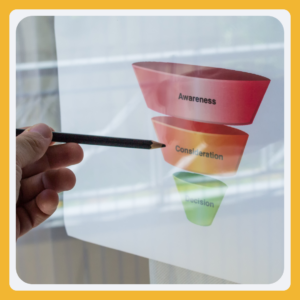Want to build a marketing plan tailored specifically to your business?
Read how we create precise marketing plan based on goals, target audience, and actionable steps.

How to Build a Marketing Plan for a Small Business – A Step-by-Step Guide
Every small business owner wants to increase revenue, build a solid reputation, and retain customers for the long term. But to achieve these goals, it’s not enough to post on Facebook or send a newsletter once a month. The real question is how to build a marketing plan for a small business that works over time, delivers measurable results, and aligns with the company’s goals.
In this post, we’ll walk you through a clear, structured process to develop a marketing plan tailored to small businesses—step by step. You’ll see how, even without a big budget or a full marketing team, any business owner can build a system that drives real results.
Why You Must Know How to Build a Marketing Plan for a Small Business
Small businesses often operate with limited resources: no marketing director, no huge advertising budget, and not much room for trial and error. That’s why every action must be intentional, and every shekel must deliver value.
How to build a marketing plan for a small business isn’t just a theoretical question—it determines whether your business survives or thrives. A well-designed marketing plan allows you to:
- Focus only on channels that deliver ROI
- Retain existing customers
- Attract new ones
- Stand out from the competition
The good news? It doesn’t have to be complex—just strategic.
Step 1: Set Clear Marketing Goals
Every marketing plan starts with a goal. Without a destination, even the best tactics won’t get you where you want to go.
Set goals that are:
- Measurable (e.g., “Increase inquiries by 30%”)
- Realistic (based on your business capacity)
- Time-bound (e.g., within 3 months)
- Aligned with your broader business strategy
With clear goals, you’ll be able to track progress and adjust your plan accordingly.
Step 2: Know Your Target Audience
You can’t build a marketing plan without knowing who you’re speaking to. Ask yourself:
- Who are my ideal customers?
- What challenges do they face?
- What motivates their decisions?
- Where do they spend time—Google, Facebook, Instagram?
- What builds trust for them?
Understanding your audience allows you to craft messages that resonate—and convert.
Step 3: Analyze the Competition and Define Your Positioning
Every business operates in a competitive environment. It’s essential to know:
- What your competitors offer
- What they do well
- Where they fall short
- What makes your business different
These insights will help you sharpen your unique value proposition and communicate it clearly.
Step 4: Choose the Right Marketing Channels
One of the biggest mistakes small businesses make is spreading themselves too thin. You don’t need to be on every platform—only where your audience is.
Some effective channels:
- SEO and Google search
- Paid ads (Google Ads, Facebook Ads)
- Email marketing and newsletters
- WhatsApp Business
- Blog content and website updates
- Targeted social media platforms
Choose the channels that align with your goals, budget, and audience behavior.
Step 5: Create High-Converting Content
Marketing is driven by content—ads, posts, emails, videos, landing pages. Great content should be:
- Clear and concise
- Emotionally or practically compelling
- Action-oriented (e.g., “Download now”, “Call today”)
- Tailored to each platform and audience
Small businesses that learn how to write persuasive content see quicker, more consistent results.
Step 6: Use Automation and Tracking Tools
You don’t have time to manually track every lead or follow-up. That’s why smart businesses use tools like Zoho CRM to:
- Automatically send emails to leads
- Assign follow-up tasks
- Track conversion sources
- Build structured marketing funnels
With these tools, your plan doesn’t stay on paper—it runs on autopilot.
Step 7: Define Success Metrics (KPIs)
You can’t improve what you don’t measure. Set clear KPIs for your marketing plan, such as:
- Monthly inquiries
- Landing page conversion rates
- Cost per lead
- New sales
- Follower growth
- ROI (return on ad spend)
These metrics will help you analyze and improve your marketing efforts over time.
How to Build a Marketing Plan for a Small Business That Delivers
Let’s recap the process:
- Define clear marketing goals
- Understand your audience
- Analyze competitors and sharpen your message
- Select effective channels
- Create high-impact content
- Automate and track your efforts
- Measure performance and optimize
That’s the essence of how to build a marketing plan for a small business—one that drives consistent traffic, generates leads, and supports real business growth.

Conclusion
Knowing how to build a marketing plan for a small business is essential for anyone who wants to move from guesswork to strategy. A smart plan doesn’t require a big team—it just requires clarity, structure, and execution.
A small business that follows a strong marketing plan isn’t just more visible—it’s more profitable.
Want to build a personalized marketing plan for your business?
Book a consultation and we’ll create a focused, data-driven plan that fits your goals—and your budget.



